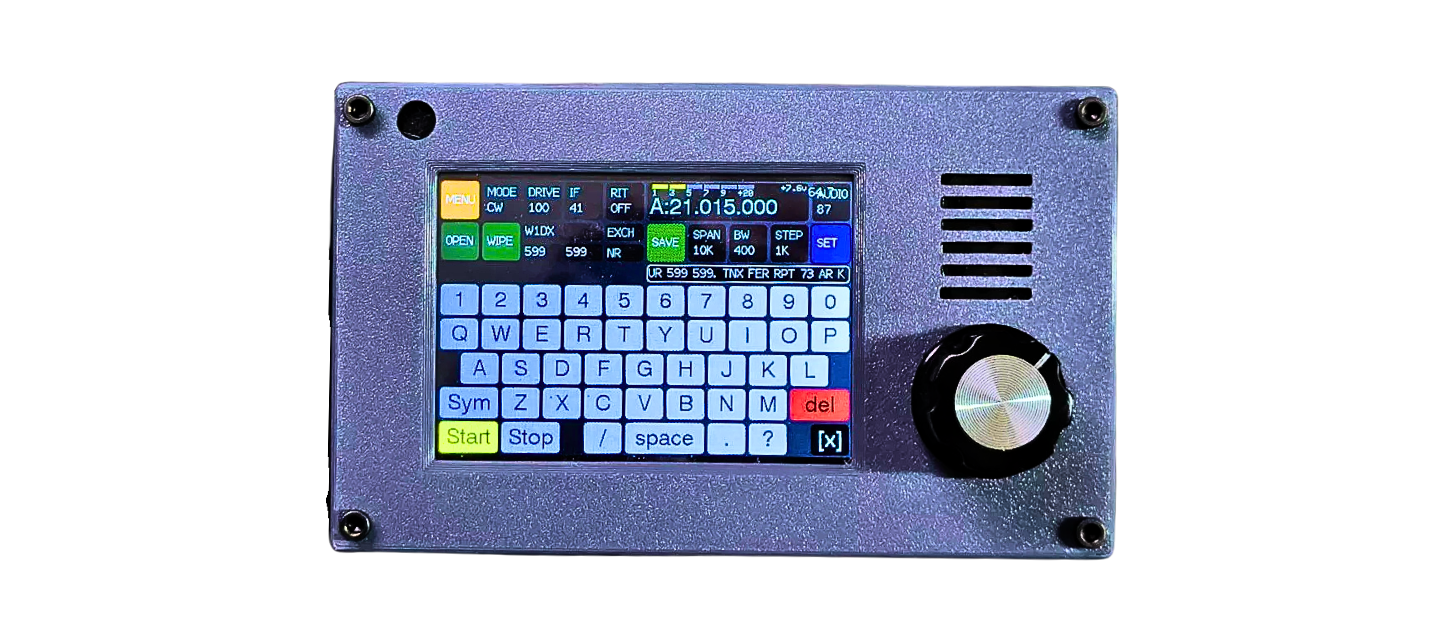The zBitx is a high-performance, open-source HF transceiver designed for amateur radio enthusiasts who enjoy hands-on building and learning. It combines affordability, flexibility, and impressive performance for its size. Because it was developed with simplicity in mind, it allows both beginners and experienced operators to explore the technical side of HF communications without breaking the bank.
Overview of the zBitx
The zBitx operates across multiple HF bands, covering 80 through 10 meters with excellent sensitivity and stability. Its architecture builds upon the original BITX series but introduces digital signal processing to improve filtering, audio clarity, and tuning precision. With its modular design, the radio provides a perfect balance between analog simplicity and digital control. Furthermore, it can be easily updated and modified to suit individual preferences.
The front panel features a bright touchscreen display, offering a modern interface for frequency control, band switching, and menu settings. The transceiver is compact enough for portable use yet powerful enough to serve as a reliable station rig. Many operators appreciate how the zBitx bridges the gap between kit radios and commercial transceivers by offering professional-grade features in a hobbyist-friendly package.
Features and Performance
The zBitx is packed with innovative features that make it stand out among low-cost HF radios. It delivers up to 10 watts of output power, ideal for QRP operations or mobile setups. Its software-defined radio (SDR) core allows precise control over filtering, demodulation, and audio shaping. As a result, users enjoy cleaner reception and reduced interference even during crowded band conditions.
In addition, the zBitx supports both USB and LSB modes, along with CW operation for Morse code enthusiasts. Its digital signal processor provides selectable filters that enhance weak signal readability. Because of this advanced DSP filtering, operators can easily tune through noise and focus on desired signals. The radio also includes an automatic gain control circuit for consistent audio output and smooth transitions between strong and weak signals.
Moreover, its open-source firmware enables users to customize functions and upgrade capabilities. You can modify the interface, adjust transmit parameters, or even add new operating modes. This flexibility attracts experimenters who like to tinker with software and hardware.
Frequency Coverage and Modes
The zBitx covers all major amateur HF bands between 80 meters and 10 meters. This range allows operation from 3.5 MHz up to 29.7 MHz, depending on antenna and band conditions. It supports single sideband (SSB) and CW modes, providing excellent versatility for voice and
Morse code communication. Because it can be configured through firmware, additional digital modes such as FT8 or PSK31 can be integrated using external interfaces or software tools.
The receiver section is designed with high sensitivity and low noise, ensuring stable performance even under weak signal conditions. Furthermore, the use of a stable oscillator and precise DDS frequency generation ensures accurate tuning throughout all bands.
Technical Specifications
- Frequency Coverage: 3.5 MHz – 29.7 MHz (80–10 meters)
- Modes: USB, LSB, CW (expandable to digital via interface)
- Output Power: Up to 10 watts PEP
- Architecture: SDR-based design with digital signal processing
- Display: Touchscreen color display for frequency and settings
- Receiver Sensitivity: Better than -120 dBm
- Audio Output: Clear and strong with adjustable volume
- Power Supply: 12–13.8 V DC
- Current Draw: Approximately 2 amps on transmit
- Firmware: Open-source, user-upgradable
- Physical Dimensions: Compact desktop or portable form factor
Advantages of the zBitx
Because the zBitx blends modern digital control with classic analog radio design, it offers a rewarding experience for radio builders and experimenters. Its modular circuit layout simplifies troubleshooting and encourages modifications. Furthermore, the radio’s software-based core provides flexibility for new features, ensuring that the transceiver evolves with the operator’s needs.
In portable situations, its low current consumption makes it suitable for battery or solar-powered setups. Additionally, the touchscreen interface makes navigation intuitive, reducing setup time and allowing operators to focus on communication.
Building and Operating the zBitx
Many users choose to assemble the zBitx as a kit, while others purchase pre-built versions. Because of its straightforward design, assembly requires only basic soldering and wiring skills. The instructions are clear, and the software is easy to load through a USB interface. Once operational, the zBitx performs exceptionally well on voice and CW contacts across various bands.
Its user-friendly interface simplifies band selection, VFO tuning, and filter control. In operation, the transceiver maintains stability over long sessions, and its audio quality rivals much higher-priced rigs. Moreover, its small footprint makes it perfect for portable QRP field work, SOTA activations, or emergency communication setups.
Conclusion
The zBitx stands out as an innovative and accessible HF transceiver that combines digital precision with the satisfaction of a home-built rig. Because it is open-source, it continues to evolve through community input and firmware development.
With solid performance, flexibility, and modern design, the zBitx is an excellent choice for radio operators who value experimentation, learning, and self-reliance in the world of amateur radio.
Please consider Donating to help support this channel
